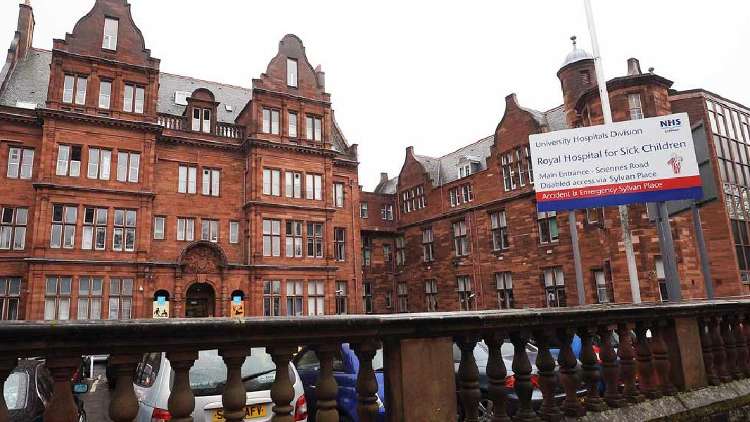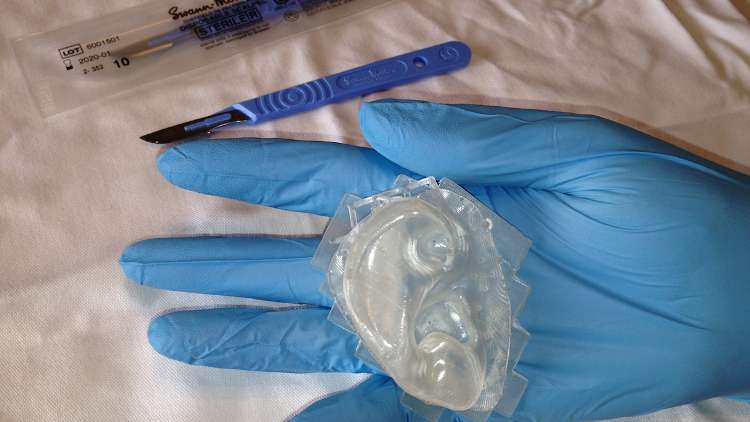Ken Stewart is head of Scotland’s Ear Reconstruction Service, based at Edinburgh’s Royal Hospital for Sick Children, where as an NHS consultant surgeon, he has for many years been perfecting advanced methods to perform reconstructive surgery on both children and adults. To produce the bespoke surgical templates for his patients’ varying conditions, Ken needed precise 3D models of both the affected and the unaffected ear, so the two can fit together to obtain the necessary shape of the future implant.
Previously, Ken had utilised several techniques for approximating the varying designs of his patients’ ears, with the most common method requiring him to take cartilage from the patients’ ribs and carving this into an ear shape. However, always on the lookout for new technologies to help with his reconstruction techniques, in 2014 Ken began investigating 3D imaging solutions in a bid to streamline the pre-operative procedure for ear reconstructions.
Speaking about his quest to simplify the ear reconstruction practice, Ken said: “With all the technology around us we needed to improve this workflow. The ear reconstruction team at the Royal Hospital for Sick Children were keen to find new technologies to help.”
After contacting Roland DG UK sales consultant for 3D and Artec UK gold partner Patrick Thorn about his ambition to utilise new 3D technology to improve reconstructive ear surgery, it was then that Ken was first introduced to Roland DG technology. While Ken remained sceptical as to whether scanners and printers could effectively 3D render the human ear, Patrick Thorn was so convinced of the high-resolution imaging capabilities of both Artec and Roland DG’s machines that he took it upon himself to produce a range of sample replicas.
Patrick arranged to scan the ears of his neighbours and his grandson using an Artec Spider 3D scanning device, which uses structured light to capture the deeper surfaces within the ear canal, as well as all the exterior area between the ear and the head. After scanning the ears, Patrick used the Roland DG ARM-10 3D printer to produce an initial sample’s. The compact desktop printer incorporates a stereo-lithography process with a UV-LED projection system to build models by sequentially curing layers of resin from a liquid resin vat.
With three types of imageCure resin to choose from – including easy-to-handle standard resin (PRH35-ST2) – the ARM-10 could easily produce the complex 3D ear render shape. Furthermore, by utilising a suspended build system, resin consumption was kept to a minimum to ensure production was both efficient and affordable; something that was essential when trying to raise the funds for the technique to be rolled out to patients through the NHS (National Health Service).
When presented with the results of Patrick’s prototypes, Ken was thrilled and knew instantly that 3D scanning and printing solutions was a quick, efficient and accurate method to produce patients’ surgical templates. In the future when implantable materials are accepted it should eliminated the need for patients to undergo an operation to source cartilage. After the successful fundraising efforts of the Sick Kids Friends Foundation, The Royal Hospital for Sick Children purchased an Artec Spider, with Artec Studio, and the Roland DG ARM-10. In a single afternoon, the solution was installed and the following day staff were provided with practical training to ensure they could fully get to grips with the process.
Ken said: “Starting with exterior 3D scanning was new for us and as we have busy schedules with day-to-day patients, it has taken a little time to perfect. However, with the training and additional notes Patrick provided, we can now use the solution from scanning to 3D print with relative ease. The model is then sterilised and utilised in theatre to improve the accuracy of our surgical reconstruction.”
Once an initial consultation on affected ear has taken place, patients return to the hospital to have their unaffected ear scanned with the Artec Spider using the Artec Studio, where data is swiftly aligned and fused to construct an impressive 3D digital model of the ear. With the information, ready for input into the Roland DG ARM-10, the next step is to begin printing. After only a few hours, the reproduced ears are readied directly from the ARM-10 by being washed in isopropanol. They are then left to sit under a UV lamp for a few minutes to harden into their shape before being sterilised, sealed, and sent to the operating room to serve as 3D templates for ear reconstruction.
For young patients at the Royal Hospital for Sick Children, the introduction of 3D imaging solutions has improved the way ear reconstruction procedures take place and in turn, improved the lives of its patients.
For more information on all of Roland DG’s products, please visit: www.rolanddg.co.uk
For more information on Patrick Thorn & Co, please visit: www.patrick-thorn.co.uk
For more information on Artec 3D, please visit: www.artec3d.com




